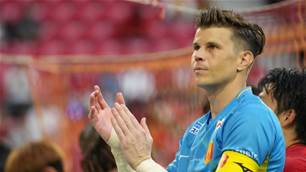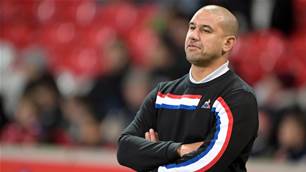There are few more idyllic locations in world football than Central Coast Stadium.
Perched so close to pristine Brisbane Water that hard-driven shots can almost become seaborn, the ground eponymously referred to as Grahame Park holds the true meaning of the term ‘boutique’.
On match days the coastal sun casts a warm glow upon canary Mariners colours. Shaded by overhanging palm trees, in any capital city this would be millionaire-territory: a place reserved for the finer things and the too-often drab, precious individuals who possess them.
But as Mariners CEO, Shaun Mielekamp suggests, this isn’t camera-snapping Sydney harbour or the espresso-swilling docks of Melbourne. This is the smallest market in Australian sport, where small-town ethos is both their greatest strength and biggest disadvantage.
“Culture is everything for us, that’s the primary focus,” Mielekamp says. We’re speaking less than a month after new coach Mike Mulvey’s first match, an 8-2 hiding at the hands of bitter rivals, Newcastle Jets.
“We’ve got a responsibility to represent the Central Coast on a national stage, to add profile to those organisations that are doing a great job on the Coast: Cancer Council, Surf Lifesaving - it’s in all walks; radio stations, newspapers, they all play a part in our community engagement.
“Community is key to our success.”
It’s understandable that Mielekamp, a former marketing and merchandising boffin in the NRL, wants to steer the conversation towards community. The ‘community club’, as the Mariners call themselves, have always been at the forefront of the A-League’s public engagement, with great success.
However, just as success becomes hollow without community, community becomes depressive without success.

Two Premierships, a Championship and three runners-up medals between 2007 and 2013 are fading reminders of a dominant era for the Mariners that surprised everyone, most of all the Coast’s locals, who had been unable to sustain a national sporting club throughout the region’s history.
Gosfordians - an eclectic mix of strolling retirees and preening tattooed surfers – have earned a reputation for not taking life too seriously. The would-be rugby heartland’s unusual relationship with football, characterised best by the Mariners’ historically testy relationship with local council, is only one reason why few mementos to the good ol’ days adorn the Mariners’ home turf.
The surrounding Grahame Park is named after Gosford’s first mayor, William Calman Grahame, a Maitland-native who was expelled from the Labor Party and left politics after a series of corruption allegations. Inside the stadium, the name of failed NRL bid ‘Central Coast Bears’ still marks the stadium seating, despite the Mariners solely representing Gosford on the national stage for the last 15 years.
On match days, beyond the now sparsely-populated stadia, giant, inflatable sauce bottles block out a million-dollar view of the ocean. There’s even, on special occasions, a Masterfoods blimp.
Once upon a time, this unique atmosphere made the club’s achievements all-the-more incredible. They’re the fool that rushed in where every other code feared to tread and, in the process, gifted a rich sporting history to a town so periodically overlooked.
But if you think the sun always shines on the carefree inhabitants of Gosford, you’re wrong. There are storm clouds on the horizon.
Related Articles
.jpeg&h=172&w=306&c=1&s=1)
Socceroos prodigy returns to A-League after horror run

Star keeper's exit heralds hero's return at A-League giant













